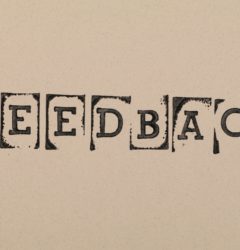Navigating the Challenges of UX/UI Design in Agile Development
19 Jun

Table of Contents
ToggleSoftware is a product that’s in continuous use. You need to update it regularly, and with time, the requirements/expectations of your employees are bound to increase. This particular challenge makes UX/UI software design so well-suited for agile development.
You see, you want a team that continuously works on the project, adapts to customer needs, and exerts an incredibly high level of adaptability.
While this project workflow sounds ideal, is there a catch somewhere?
The truth is that all of this is incredibly hard to pull off. When it works, it gives the optimal results; however, making it all come together is nowhere near as easy as it seems (provided that it seems easy, to begin with, which is also arguable). So, here are some of the biggest challenges of UX/UI design in agile development and how you can navigate them successfully.

What does agile look like in UX/UI design?
The way agile UX/UI design works is through iterative development. Instead of just making a whole plan and taking a stab in the dark, you create a short development cycle (the first time you’re merely making a prototype) and send it out there to get user feedback. This user feedback is more useful than any preliminary feedback, giving you a chance to see what you’re up against.
Due to the nature of this process, you won’t have too much time to develop this project’s first stage. While, combined, all of these cycles last longer than a traditional (waterfall) development process, it will never feel this way because you’ll never even consider the duration of the entire development. In practice, you’ll just measure the duration of each individual cycle, and it will always seem like you’re chasing impossible deadlines.
The truth is that these deadlines are not impossible and that the result is far more based on the user experience and feedback than anything your R&D team could develop on its own. This is how UX and UI align with the agile principle and why this gives such amazing results.
How do you handle tight timeframes?

We’ve addressed the biggest UX/UI design challenge by agile principles – tight timeframes. Fortunately, there are many ways to handle this.
The first cycle will always be a tad longer. Then, you can use all the data from the previous process and figure out how the time management went. So, during your next process, you’ll have an easier job prioritizing and setting focus.
You can set primary and secondary objectives when the time frame is limited. Primary objectives must be fulfilled, and secondary objectives are optional but preferable. You can even go above and beyond to incentivize the team (to give it their best) or further outsource parts of the project. A good thing with agile development is that there’s always the next cycle.
Perhaps the biggest challenge lies in balancing speed and quality. Sure, you want the project to be done, but you want it to be done successfully. Set your quality goals and ensure you have reliable QA people on your staff.
Bear in mind that speed is not always secondary to quality. This is especially the case when you must ensure that your marketing catches up with all your latest updates. For instance, a SaaS PPC agency may deliver results faster than an organic SEO can, so you need this extra space to ensure everything is done in time.
Also, while the number of features is important, you want to introduce them gradually. Always prioritize the usability of existing features over introducing new ones.
How do you adapt to user feedback?
First, you need to gather the right feedback from both users and stakeholders. Your target audience and those who trust you with the money need to know what’s going on. They also need to understand why and how these resources are being managed.
Now, the biggest problem lies in conveying this feedback to the team. Displaying flexibility in response to change is what agile development is all about. If you don’t adapt according to the feedback, then gathering feedback, in the first place, is all for nothing.
The thing is that not all feedback is valuable or constructive. So, you need someone who knows what they’re doing in charge of feedback curation. The most important thing is that you understand the purpose behind these changes. The development process is oriented around change, but it should never be changed for the sake of change.
How do you coordinate a team on UX/UI development project?
Introducing designers when the project is already well on its way is like introducing someone to a show during its 7th season. Even with a recap, they won’t be able to catch up too much right away. After a while, they’ll have a much better understanding of the project but still have some gaps, and this understanding will never get as in-depth as it would have been had you involved them from the very start.
So, what do you do about it?
You involve them from the very start.
Your developer team needs to have a continuation of working on the project. So, when hiring and collaborating, look for those who can commit for the long run.
How to improve communication and collaboration?

So far, we’ve talked about communication quite a bit, but how does this look in practice (for agile projects)?
First of all, you need to have ongoing communication with your teams every single day. Second, you need regular checkups and meetings (even a 10-minute meeting) to ensure everything is on track. If some feature/update requires more time, you must know enough beforehand. Last-minute delays never look good.
You also want to improve the communication channels. Pick the right software, ensure everyone knows how to use them, and urge people to keep different channels (even within the same software) for tasks that are not project-related.
Lastly, feedback is one of the most important forms of communication. You want to keep all the records for as long as possible. Ideally, you want to turn it into structured data and get a document management system (ideally, even IIMS) to do so.
One of the tools you could use to improve collaboration is zipBoard. This tool fits perfectly with agile development since it provides version control, thus providing much higher transparency and accountability. Aside from this, accessibility testing and bug tracking features, combined with visual feedback, will make quality assurance (concerning UI and UX) much higher.
Also, remember that project management tools (like Monday, Trello, or Basecamp) and communication tools (like Slack, Zoom, or MS Teams) are indispensable for more efficient communication.
Wrap up
In the end, while coordination takes a lot of work and handling all of these cycles isn’t easy, it’s definitely a shortcut to developing a superior platform. Now, with these several basic challenges covered, you can be well on your way to improving your own UX/UI design through agile development.
Related Post
Recent Posts
- Document Versioning: What It Is, Benefits, Best Practices, and Tools July 18, 2024
- Improved Document Version Control in zipBoard! Add Multiple File Versions. Never Lose Track of Any July 18, 2024
- 5 Tips and Tools for Effective Collaborative Video Editing July 10, 2024
- A Guide to Understanding Micro-interactions for Improved User Experience July 8, 2024
- 9 Strategies to Track Project Progress and Ensure Timely Completion July 1, 2024
©️ Copyright 2023 zipBoard Tech. All rights reserved.


